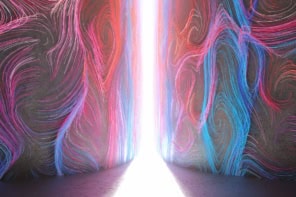
Photon-based qubits and entangled states have been transmitted up to 3 m in sea water by Xian-Min Jin and colleagues at Shanghai Jiao Tong University and the University of Science and Technology of China. While this distance pales in comparison with the 1400 km satellite-to-ground transmission achieved earlier this year by another team in China, the ability to send quantum information through seawater is a significant challenge because the liquid medium is much more absorptive of light than air.
Photons make very good qubits (quantum bits of information) because they can travel long distances without interacting with transmission media such as an optical fibre or air. These interactions destroy quantum information and therefore at first glance water should be a poor medium for qubits because it is much more absorptive of light than optical fibres or air.
Window of opportunity
The team managed to get around this problem by using photons with wavelengths of 405 nm, which falls within the “blue-green” window in which light absorption in water is relatively low. They also worked out that encoding quantum information in the polarization states of a photon gives the qubit its best chance of surviving its watery journey. This is because seawater is isotropic and therefore there should be no strong de-polarization effects. Indeed, the team’s calculations suggest that the polarization of a photon can survive multiple collisions with molecules in seawater – and any depolarization that does occur can be dealt with by filtering out the affected photons.
Jin and colleagues showed that quantum information encoded in single 405 nm photons can be transmitted 3 m with a fidelity of greater than 98%. The team also did a separate experiment involving entangled pairs of 810 nm photons. Although these photons experience about 300 times more absorption than their 405 nm counterparts, they found that quantum entanglement is preserved to a very high degree after one of the photon pair is transmitted 3 m through seawater.
Secure submarines
The transmission of qubits and quantum entanglement play roles in quantum key distribution (QKD), which uses the laws of quantum mechanics to ensure that messages can be sent securely between two parties. It could be possible, therefore, to use QKD on a submerged submarine, for example. The problem, however, is that seawater is highly absorptive of light even at 405 nm, so communicating over distances of a kilometre or more would require huge numbers of photons.
The research is described in Optics Express.


